
20 minute read
Technical
QUALITY ASSURANCE
– meet the team helping to uphold the highest standards on the agenda
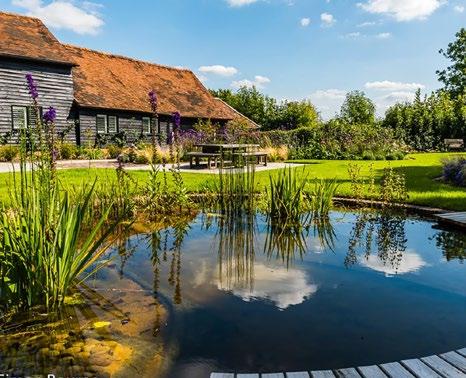
One of the many reasons why clients choose an Association Accredited Contractor is the fact that we take considerable steps to ensure that our members consistently and systematically deliver what clients can reasonably expect, in-fact that is our definition of quality. Before being granted British Association of Landscape Industries Accredited status all members are assessed against our published Quality Standard to ensure that they stringently meet all the required criteria. To guarantee continued quality, the stakes were raised even higher in 2014 with the introduction of Quality Standard Reviews (QSR); a process that replicates the initial vetting process. The majority of Accredited Contractors have received a QSR, but just as we made plans to carry out further visits we were forced to suspend trips to members because of the impact of the COVID-19 pandemic. We are delighted to say that we have recently recommenced our QSR programme and have planned to visit most of the outstanding members in the coming months. With over 500 Accredited Contractors to assess, spread throughout the United Kingdom, we need a dedicated team of Vetting Officers to deliver the important task. I am delighted to say that I am privileged to be part of such a team. The Vetting Team has evolved and grown significantly over the past few years to meet the QSR challenge, and it now boasts a wealth of industry expertise. Therefore, we thought it would be a good idea to introduce you to the team as it currently stands. The team is currently nine strong and our Vetting Officers are all engaged on freelance basis and only called upon when needed to ensure effective spend of Association budget. As you can appreciate, the density of our membership varies considerably across the country and as a result some vetting officers find themselves busier than others, but we now have very good geographical coverage. (continued on page 34)
By Richard Gardiner
Technical Officer (Quality Assurance)

QUALITY ASSURANCE TEAM (cont. from page 32)
5
6 4
9
7
2
3
1 8
MEET THE TEAM
1Richard Gardiner - Having been born into a landscaping business, to say I have a lifetime of industry experience would not be overstating it. Whilst running the family business with my sister I also held a variety of voluntary posts within the Association, at both regional and national level, serving as Chairman in 2009-10. Whilst I am now Somerset based, I still cover my old stomping ground in the South Thames region, working my Association requirements around my consultancy business.
2Stuart Phillips – Northampton based; Stuart’s area straddles the M1 but also spreads a long way west to the Welsh borders. Stuart brings a wealth of industry experience, in particular from the education side, and works his Association commitments around his role as an End Point Assessor.
3David Mulholland – Based just outside Oxford, David covers most of the North Thames region but can also find himself in the Cotswolds too. The bulk of David’s experience was as a client, overseeing the landscape works at London’s Heathrow airport. When leaving Heathrow, David secured positions with contracting companies before starting his landscape consultancy, which he now runs in parallel.
4Alex Clayton – Covering our Yorkshire and North East region, Alex has not long retired from his management role with Accredited Contractor Brambledown Landscape Services. Alex is a great asset to the team and not only does he know the industry inside out, he also knows many of the members he visits due to having been so active within his contracting days.
5Bill Peebles – I like to call Bill “Mr Scotland”, whenever I travel to Scotland, no matter who I end up talking to, Bill’s name invariably crops up in conversation. Whether it be from his many years contracting from his base just outside Glasgow, his numerous voluntary roles through which he is recognised as a true industry champion, or indeed his tireless work supporting and inspiring young people. Whilst Bill covers the whole of Scotland, you can appreciate that the core of our members are centred around the major cities of Glasgow and Edinburgh, for which he is ideally placed.
6Bob Field – Having only recently stood down from the Board, Bob has championed the smaller, domestically focussed contractors for many years. Having run his own domestic contracting business, he has great insight into the challenges faced by businesses of this type. Bob is based in Truro, Cornwall and is a valuable resource to the region.
7Chris Murphy – The newest member of the team, Chris is West Midlands born and bred and based in Burton-on-Trent. Chris is ideally placed to cover the M6 corridor, Birmingham and into Wales too. Chris has an ideal background for the role of Vetting Officer, having been a contractor, a lecturer and now, like Stuart fits his Association demands around his work as an End Point Assessor.
8Des Drake – The third and last of our End Point Assessors, Des has had a wonderfully varied career in the industry and although new to his Vetting Officer role, has taken to it like a duck to water. Based in North Norfolk, Des covers the majority of the East Anglia region and also dips down to the eastern parts of North Thames too.
9Gordon Darlington – A passionate industry advocate, Gordon has been vetting for the Association for over a decade since retiring from his role in a contracting business. Based in Macclesfield, Gordon is known to many of the members in the North West, having been a very active member during his contracting career. Sadly, Gordon is hanging up his clipboard next year, but many of you will cross his path as he completes his QSR commitments over the remaining months of his tenure.
I would like to take this opportunity to thank the vetting team for their passion, flexibility, and commitment to the Association and advise members to tap into their pool of knowledge when you get the opportunity. It is our objective, as a team, to make the QSR process, as valuable to your business, as it is to the Association.
Celebrating an incredible
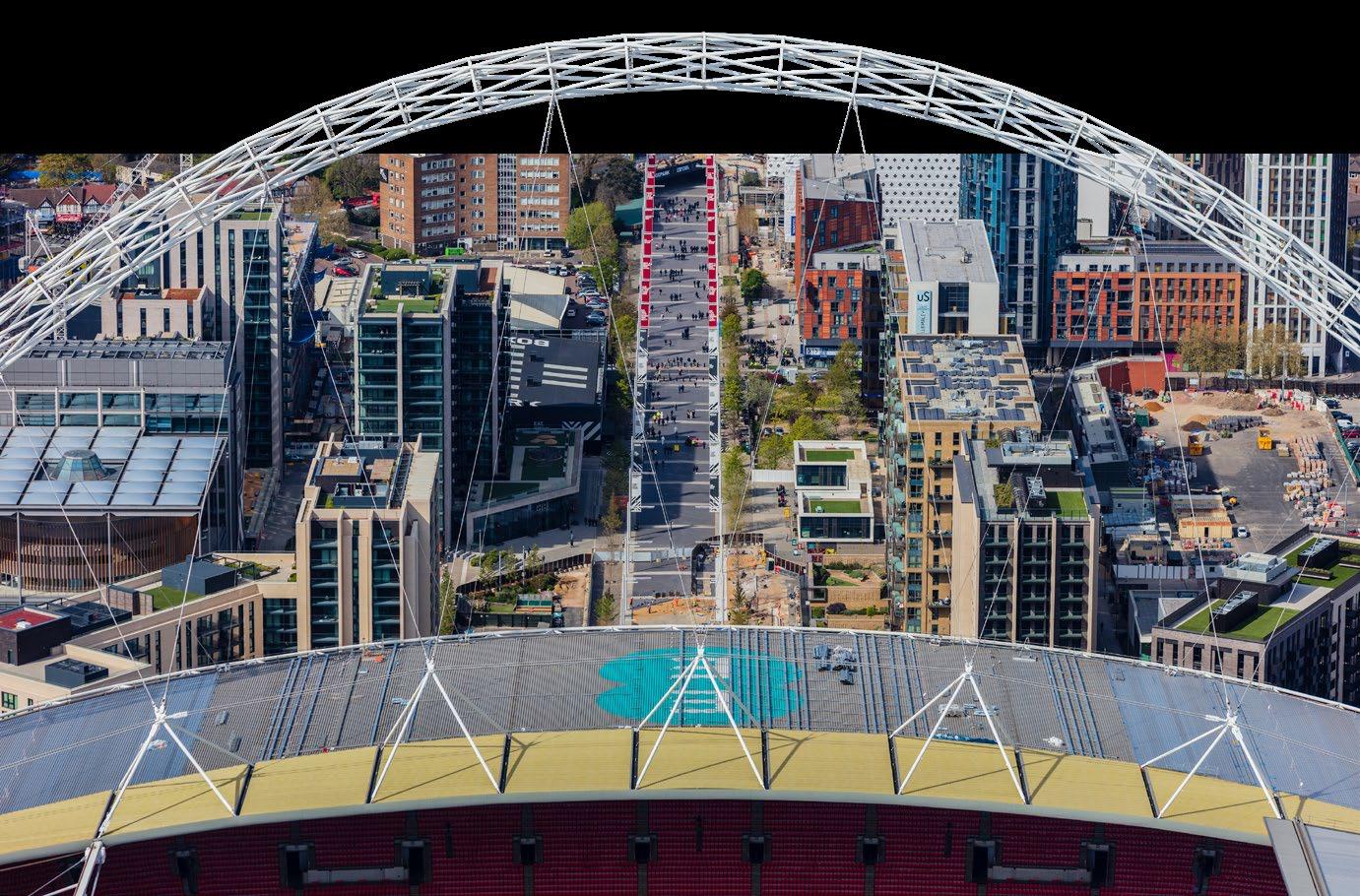
SUMMER OF SPORT By Olivia McCullough Marketing & Communications Manager
Despite the disruption caused by the onslaught of the COVID-19 pandemic, over the past few months, we have witnessed a bumper celebration of sport. Rescheduled events were run alongside 2021 planned fixtures, providing an exhilarating summer of sporting action.
From Wimbledon, to the rearranged Tokyo Olympics, the Lions Tour, to the reorganised Euro’s 2020, many of us have been gripped to the edge of our seats. And what else do these events have in common? They have all been
Andy Murray serving on Centre Court on day one of The 2021 Championships
Photo: AELTC/Bob Martin designed, built, and maintained to the highest possible standards befitting to the world stage.
Landscape News spoke to Association members to find out what it takes to keep venues in tip top condition and what challenges the COVID-19 pandemic has added to their quest for perfection.
Game, set, and a perfect match

Maintaining the 42 acres of grounds at the world-famous All England Lawn Tennis Club (AELTC), better known to many as Wimbledon, is certainly no mean feat. Head of Courts and Horticulture, Neil Stubley, leads a permanent team of 15 ground staff which increases to 28 during The Championships. This ensures optimum standards of the 18 Championships and 20 practice grass courts.
Following independent expert research from The Sports Turf Research Institute in Yorkshire, UK, the courts have been sown with 100 per cent Perennial Ryegrass since 2001 (previously 70 per cent rye/30 per cent Creeping Red Fescue) to improve durability and strengthen the sward to better withstand the increasing wear of the modern game. The grass is cut, precisely, daily during the Championships to a height of 8mm and it takes the team around 10 months and nine tonnes of grass seed each year to prepare a Championships’ standard court before it can be played on. Mark Pyrah, from Accredited Supplier ICL, added; “Our sports turf portfolio of products have played an integral part in helping maintain both the worldfamous Wimbledon courts along with providing nutritional solutions to feed the abundance of nursery stock and bedding plants used at the venue throughout the year. ICL have also assisted in the development of a feeding regime for the recently installed living wall on number one court. We have had a close working relationship with Wimbledon and the AELTC for many years and are very proud that it is ICL technical support along with our product portfolio that remains the choice of Champions.”
Goddards and Wembley – the home of football
The England team may not have seized the ultimate EURO glory in the 2020 Final, but their performances throughout the competition both united and excited crowds watching at home and at Wembley. With fans returning to the iconic home of English Football as the lockdown eased, the spotlight may have been on the team and the results, but at the very forefront of the coverage and build-up
was imagery of the stadium and its approach. TV coverage was superb and afforded us spectacular aerial views of the stadium and walkway as fans arrived. But it was not only the iconic arch that drew the eye, but the Avenue of Champions – Wembley Way – flanked on either side by 70 uniformly perfect extra heavy standard tree pairs of 40-50cm and 60-80cm girth.
Creating The Avenue of Champions
Visitors to national and international sporting and entertainment events are guided along the most famous of thoroughfares by pairs of ‘champion’ tree species. The design, a 2017 public realm competition-winning submission, was translated into the stunning esplanade by Association members and Accredited Contractors Goddards. With a project team headed by Goddards (Landscape Contractors) Managing Director Peter Bassett, the avenue was completed in three phases. The final planting continued throughout 2020, completing in June 2021.
Inspired by a Kew Gardens masterplan theme, the avenue is formed of alternating pairs of ‘champion’ species from around the temperate world. Step out from the underground station through walnuts and sweet gums from the Americas; leap across the Atlantic into field maples and limes and forwards into Europe through UK native varieties; head down into Southern Europe through Turkish hazels, oaks and Caucasian wingnuts; at the foot of the Olympic Steps to be greeted by Asian varieties like Zelkova and Katsura. The visual effect of the changing foliage of these throughout the seasons is breath-taking, with gingery aromas, crown shape, foliage and bark contrasts along the way.
Tree selection and project delivery
The intricacies of tree selection and tagging were conducted by a teamwide collaboration with Goddards, choosing and tagging the mirrored pairs from three specialist tree nurseries across Europe. Airpotted at least a year prior to planting, this ensured maximum visual impact, minimal root shock and impressive girth and canopy growth in their early years. Goddards managed the transport, scheduling and delivery of the trees in each phase impeccably, negotiating tight timeframes, tight site regulations and tight access restrictions. Trees in the later phases were held at the company’s own nursery to ensure continuity of supply throughout Brexit and COVID-19 restrictions. Working with engineers, consultants and contractors, the landscape team applied the highest level of landscaping excellence to pull off the millimetrealigned placement, securing and planting of each 4 tonne tree into its 30 cubic metre pit using an 80 tonne mobile crane. The landscape team contended with daily, weekly and pandemic-sized interruptions with a continuous flow of events, visitors and other contractors accessing the amenities at the shortest notice.
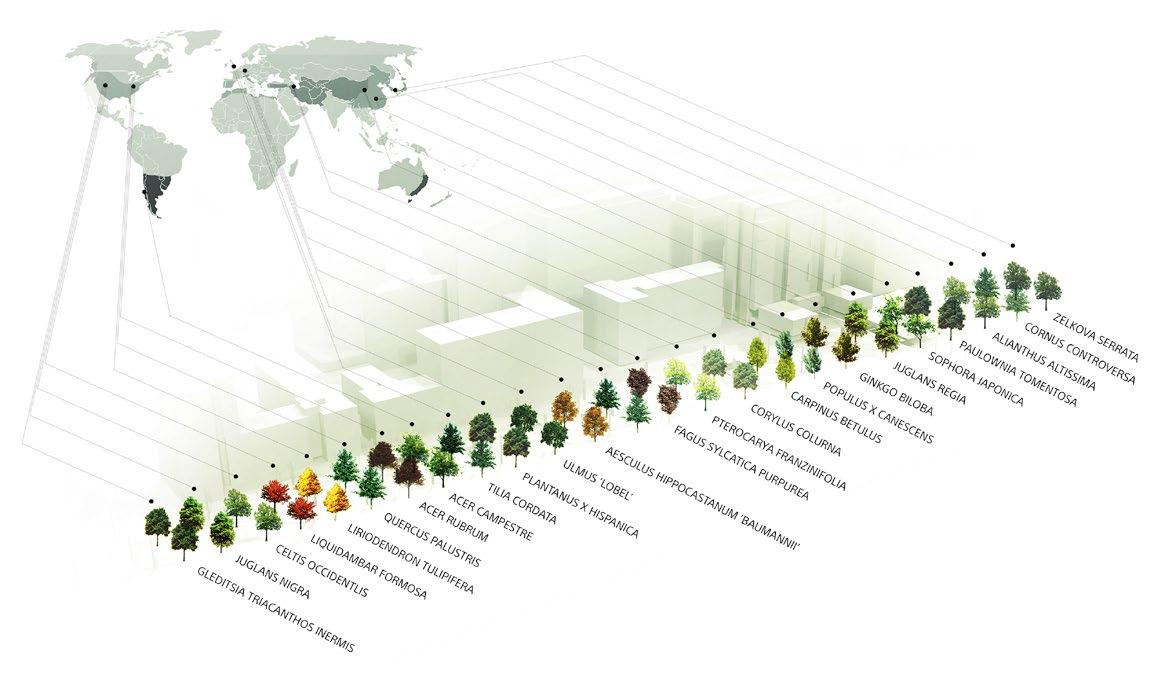
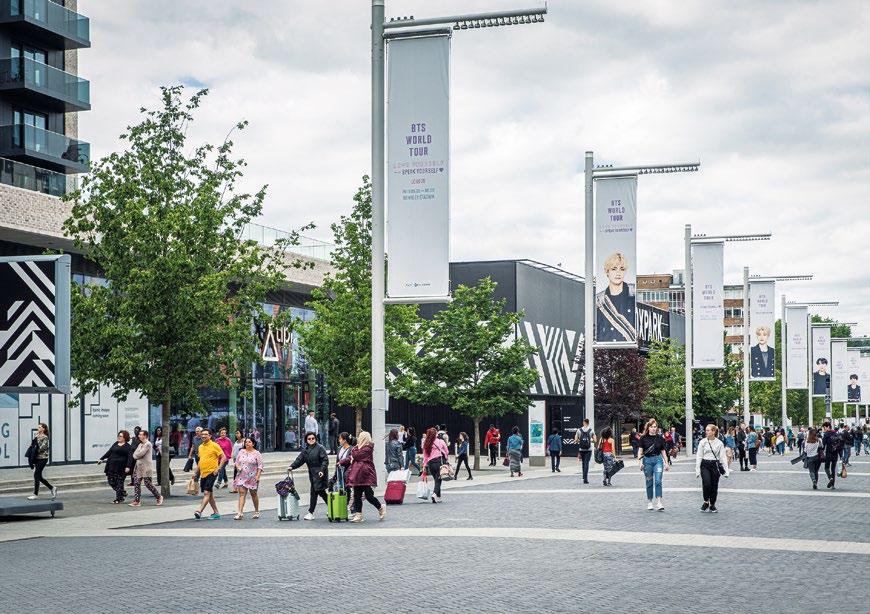
Right down to the finishing touches on each cast-iron tree grille marked with Latin name plate and longitude source, the avenue is a magnificent example of tree planting expertise. The trees signpost the best pedestrian route from Wembley Station to the Stadium, controlling crowds and partnering with lighting and signage to create a stunning overall visual effect from every viewpoint and a global longitude-by-longitude journey across the arboricultural landscape.
It takes a team of 15 to maintain the iconic Royal St. George’s course

Celebrating an incredible SUMMER OF SPORT (cont)
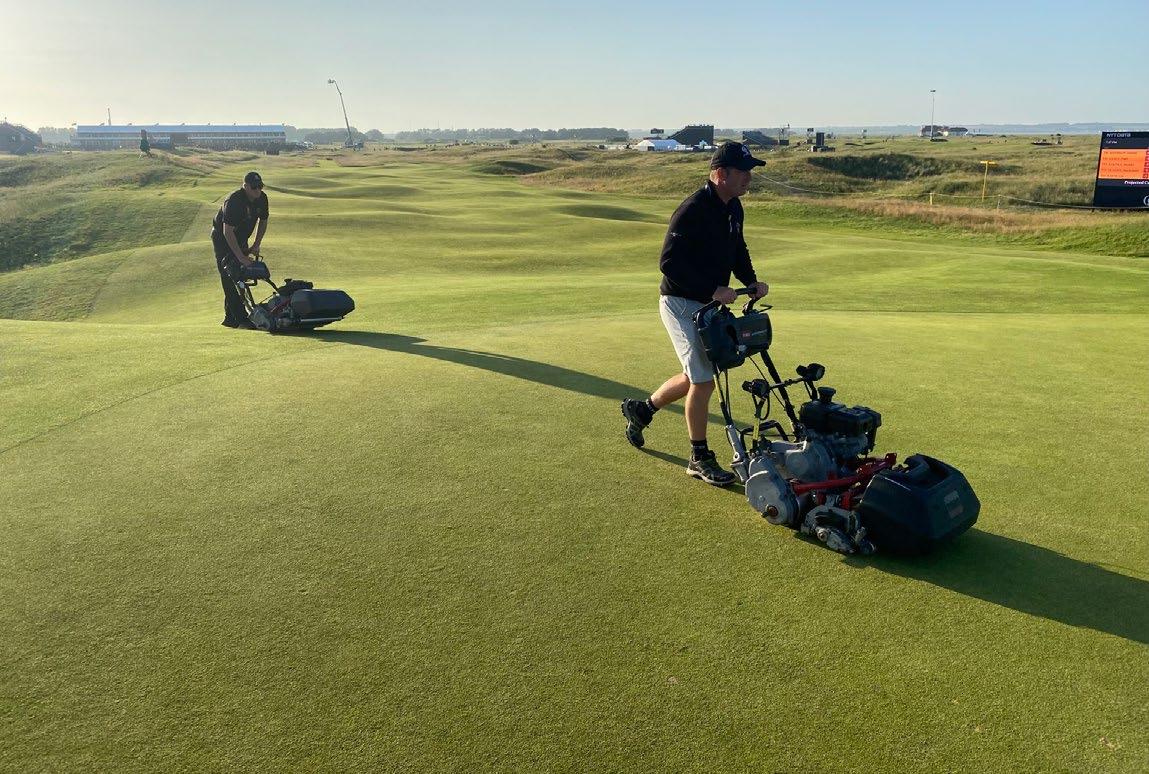
Tee-ing off on the perfect course
Maintaining the greens at golf courses is a challenge for even the most experienced greenkeepers and that’s before you add in the extra hurdles of a global pandemic and the impact of climate change. Paul Larsen, Head Greenkeeper at Royal St. George’s, home to The Open Championship gave Landscape News a fascinating insight into how he and his team of 15 maintain the iconic sporting venue, and how they have adapted in the face of COVID-19 related obstacles in managing the Site of Special Scientific Interest in keeping with its natural surroundings. Over his ten years at Royal St. George’s one of the greatest challenges for Paul and his team has been managing the impact of climate change. “Since 2018 we have experienced particularly extreme changes in the weather conditions which has added a layer of complexity to our roles. We have witnessed extremely hot and dry summers coupled with exceptionally wet winters. Marrying the two together comes with its challenges as we continuously strive to uphold the very highest standards for our members and the public. Ultimately, the course has to consistently meet the quality expectations all year round despite the problems that we can encounter due to the weather” explained Paul. The team have counteracted some of these challenges whilst also considering how to positively impact the natural surroundings and habitats. A reservoir was built at the Kent course in the winter of 2018, to help maintain the water system and to store water. Sand scrapes and dune slacks have been maximised to not only hold water, but to create extremely valuable habitats for mining bees, digger wasps and rare beetles. Paul and his team have worked tirelessly to manage the Site of Special Scientific Interest, assessed to be favourable by Natural England, by focusing on maintaining amenity areas and leaving the rest in sync with its natural surroundings and growing grasses native to the area and bringing in wildflowers.
And how did the COVID-19 pandemic impact the team?
During the first UK lockdown Paul’s team was reduced to a skeleton team of five to carry out essential maintenance work and he was thrilled to welcome the team back ahead of a golf boom. Paul’s work with a number of Association Accredited Suppliers including Toro, ICL, and Barenbrug has been a constant and played a key part in improving quality on course. Barenbrug UK, has worked closely with Paul for a number of years and their grass seed strategy has seen huge benefits on the course. Yvonne Hargreaves, Brand Marketing Manager,
Paul Larsen, Royal St. George’s Head Greenkeeper
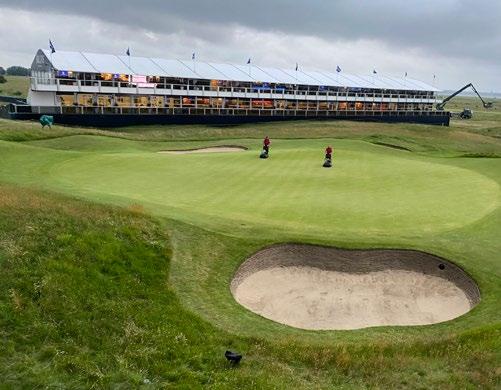
Barenbrug commented: “Barenbrug is proud to have a long-standing relationship with Paul and his team at Royal St George’s. We have increased the Fescue grass population on the course, specifically over the last couple of years to grow the levels of Hard Fescue on the fairways, to raise drought tolerance following the summer of 2018. The fantastic condition of the course during The Open is testament to the hard work of Paul and his team.” Andrew Pledger the local Areas Sales Manager at Accredited Supplier ICL has worked closely with Paul since joining the team in October 2018, having previously been a Head Greenkeeper himself for fifteen years. Andrew also volunteered his greenkeeping services during the recent Open Championship at Royal St. George’s and continues to provide research-based product solutions to Paul and other East Anglia based golf courses on behalf of the organisation. From football to tennis to golf, it is clear the passion attached to sport reaches much further than the game itself. Preparing and maintaining these world-famous grounds is just as much a labour of love and display of expertise and teamwork from the hard-working teams behind these iconic venues.
icl-sf.co.uk goddards-landscape.co.uk barenbrug.co.uk
HY-TEX LAUNCH NEW FULLY BIODEGRADABLE TREE-GUARD TO CELEBRATE 30 YEARS IN BUSINESS
Continuing their 30-year anniversary celebrations in 2021, Accredited Supplier Hy-Tex (are proud to announce the official launch of a new fully biodegradable product - EcoHaven™ Tree Guards – available this Autumn.
The Eco-Haven™ range is an entirely new range of biodegradable and recyclable, and highly durable tree guards, shrub shelters and vine guards. The tree guard product offers the highest environmental credentials, providing a sustainable and responsibly sourced solution with a significantly lower carbon footprint than other tree protection products currently available on the market.
Eco-Haven™ has been unveiled following the success of Hy-Tex’s Ecotex 100 Tree Mats, launched back in 2020. Ecotex 100 Tree Mats are fully compostable and completely biodegradable tree mat spats that complement Eco-Haven™ and are supplied in an innovative tear-off roll format, designed for smooth handling and installation.
Hy-Tex’s director, David Poole, commented: “The whole journey from conception to finished product is so important to Hy-Tex, whilst also ensuring the sustainability of the entire process is an environmentally friendly practice. Throughout the development of these new products, we’ve made it our mission to do our utmost to apply our wealth of knowledge and experience at all times and ultimately hope our customers are satisfied with the results.”
For more information on Hy-Tex (UK) Ltd visit hy-tex.co.uk
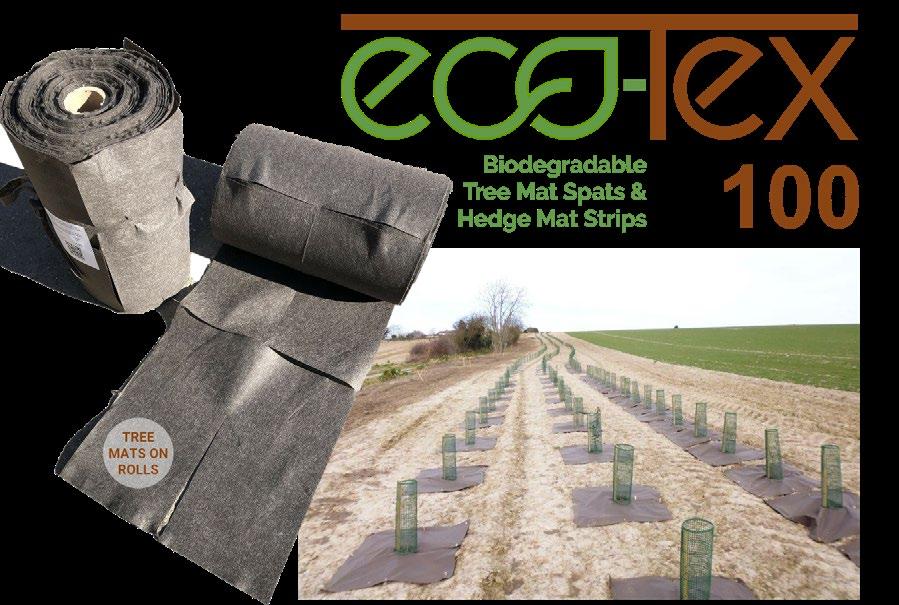

LANDSCAPE exhibition coming to Birmingham
Landscape, dubbed as the UK’s premier landscaping exhibition will take place on 3 and 4 November 2021, at the NEC in Birmingham.
LANDSCAPE is dedicated to bringing the industry together by introducing its visitors to the latest products, services and techniques necessary to design, build and maintain prestigious landscaping projects all over the world. The exhibition will welcome over 200 exhibitors and entry to the event is free.
As the first in-person industry show back, LANDSCAPE offers the perfect opportunity to reconnect at its new, larger venue.
To register to attend for free, visit the registration page at
landscapeshow.co.uk/register

The importance of front gardens in the battle against flooding in urban areas

Recent storms in the UK have highlighted the vulnerability of many areas to high levels of rain. Whilst research suggests climate change will result in hotter, drier summers in the UK, it has also warned the rain which punctuates this heat is likely to fall in heavier bursts. The Association’s Technical Officer, Owen Baker, explores the issue more closely and how our green spaces and play a part in mitigating flooding in urban areas.
In addition to the challenge of adapting to climate change, increased development of greenfield land has the potential to increase the rate of surface water runoff. Surface water runoff is defined as the flow of water on the ground surface when excess rainwater falls and can no longer infiltrate the soil. This can occur naturally when the soil is saturated but, as commonly found where development has occurred, when impervious surfaces such as traditional pavements and driveways have been installed.
To prevent flooding, it is necessary to reduce surface water runoff rates and match – as closely as possible – that of predevelopment rates. Without this management, flooding is likely to occur in any area, but particularly in urban areas where there is a higher concentration of development and surface water runoff is more likely.
Together with amenity planting and greenspaces, gardens attached to domestic homes in urban areas have the potential to play a key role in reducing the severity of flooding during storm events by reducing the speed and volume of water flowing directly into public drainage systems and watercourses. Although individually small, research suggests domestic gardens contribute a significant proportion of land in towns and cities; up to 36% of the total urban area and up to 63% of urban green space.
Whilst generally smaller than the rear garden, the front garden of urban properties can also play a key role in reducing runoff. The reality, however, is that the front gardens of many houses in urban areas are paved over for use as a driveway without any mitigation. Research over a 20-year study period (1991 – 2011) suggests impermeable surfaces in domestic front gardens has increased by 22%.
A 2016 study by Heriot Watt University revealed a typical front garden with no impermeable paving was found to produce no runoff in response to both 1 in 5-year and 1 in 50-year storm events. The addition of a small area of impermeable surface resulted in runoff.
The same research paper suggested a typical front garden in London is more likely to generate higher runoff volumes than cities in other regions due to the higher rainfall intensities applicable to the south-east. For example, the current 1 in 5-year event in London is equivalent, in terms of runoff volume, to a 1 in 50-year event in Edinburgh.
Predictably, forecasted increases in rainfall intensity will have the effect of increasing runoff from front gardens throughout the UK, which means the contribution of paved front gardens to the overall surface runoff volume will also increase.
Reducing the surface area of impermeable surfaces in front gardens in urban areas is not straightforward, given the trend for car ownership and desire to park on a driveway. Whilst planning regulations have been
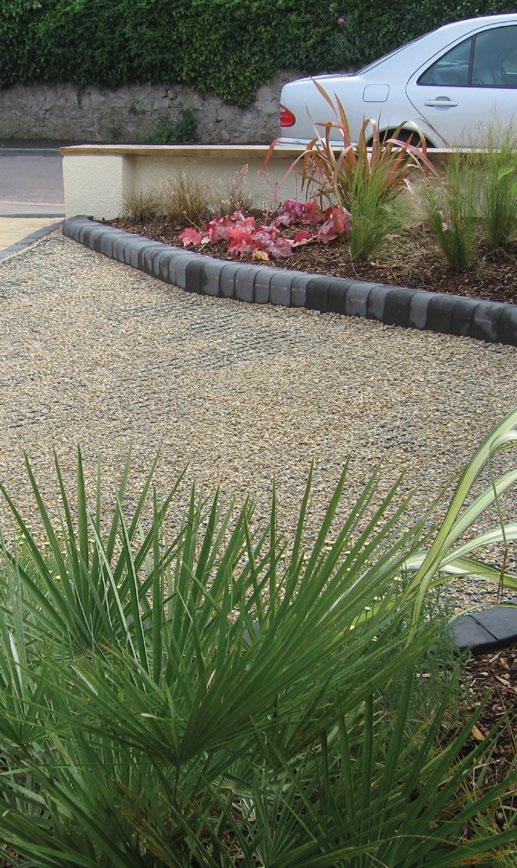
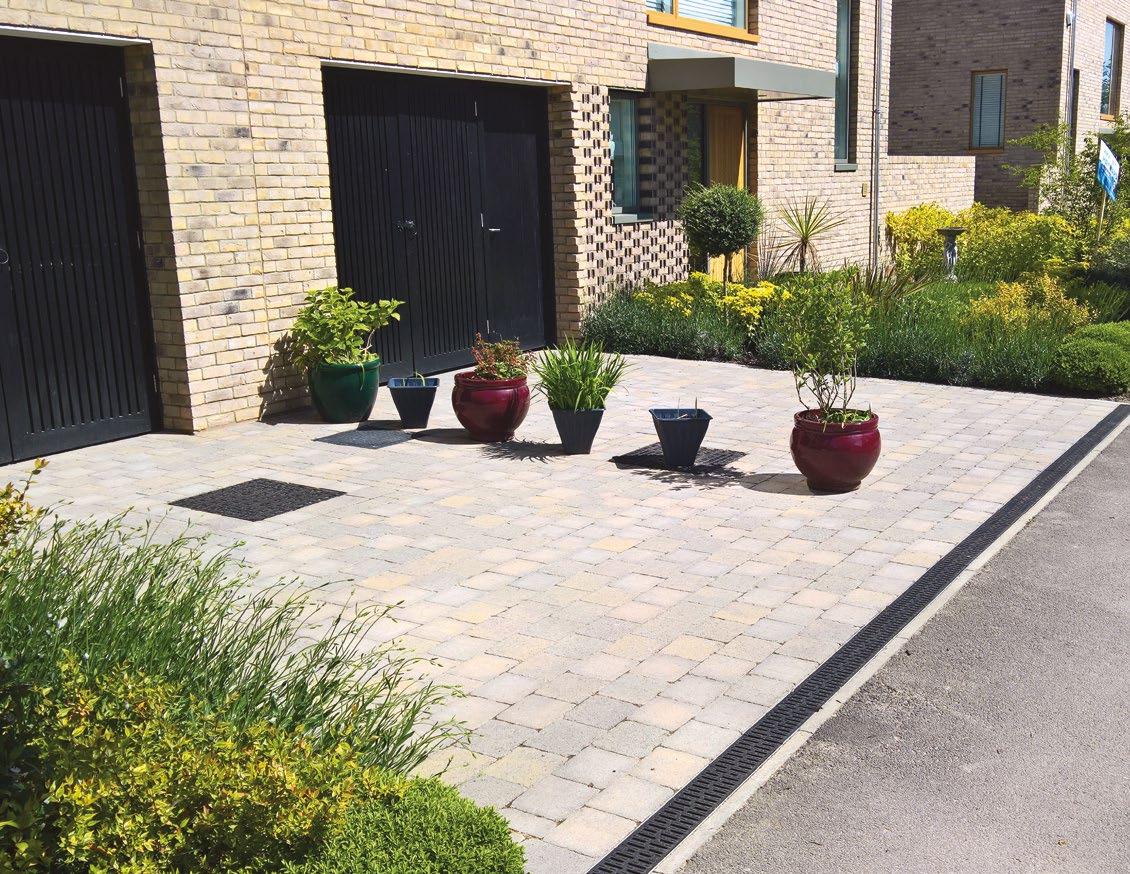
changed to reduce further loss of permeable surfaces and encourage consideration of drainage, there is evidence these are not enforced, and there is no legislation to target the gardens that have already been covered with an impermeable surface.
Educating homeowners about the important role front gardens can play in the urban landscape in terms of rainwater management and providing them with advice on how to minimise the impact of any changes they make is likely to present the most reliable solution at present.
Financial incentives may also play a role in encouraging homeowners to consider how they manage rainwater; aside from the likely effect of urban flooding on insurance premiums and property prices, the Water Services Regulation Authority (Ofwat) now requires domestic water companies to reduce their sewerage charge to property owners (referred to as a surface water drainage rebate) where no surface water from a property enters a sewer. Some European Union countries have adopted policies where homeowners are charged for the removal of rainwater from their property, encouraging more careful management of water. Correctly specified and installed drainage systems can ensure development occurs at any scale without increasing the risk of flooding. Sustainable Drainage Systems (SuDS) refers to surface water management that considers a range of factors including water quantity, quality, biodiversity, and amenity. Techniques can be applied to individual driveways so that homeowners can have a driveway in place of their front garden without significantly increasing surface runoff from their property.
The range of products available from Association Accredited Suppliers to domestic and commercial customers has increased significantly over recent years, meaning non-permeable paving products can be used in conjunction with rainwater harvesting systems and infiltration tanks to achieve greater infiltration of rainwater.
Of course, the success of sustainable drainage systems relies on designers advising clients of the benefits and contractors installing them correctly. When constructed correctly, they offer the benefits of traditional hard surfaces without the risk of increased surface water runoff. Maintenance requirements are minimal which means, at the very least, the client will contribute to combating flooding in their local area and – depending on the system chosen – may also benefit from a sustainable source of water for use in the garden.
Over the coming months, the Association will work with Accredited Supplier, Designer and Contractor members to run a series of webinar presentations to outline how to design, specify and install sustainable drainage systems.
Owen Baker - Technical Officer (Policy & Research)








